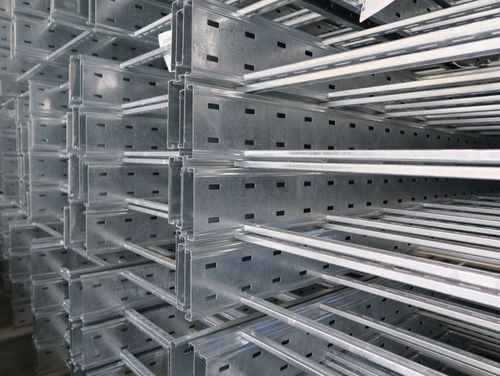One of the most important characteristics to take into account when choosing cable trays for an installation is whether they offer good ventilation, as this is vital to prevent cable deterioration and extend their service life. Understanding this key aspect will allow us to select the most suitable cable trays for each environment.
Ventilation in cable trays refers to the air flow inside the tray. These trays are used to support and protect the cables, but they must also allow air to circulate freely, ensuring that the heat generated by the cables does not build up and damage them by overheating.
The benefits of proper ventilation
One of the main benefits of good ventilation in cable trays is that it helps to keep the temperature of the cables within safe limits, thus preventing deterioration of the insulation and loss of performance.
In addition, ventilation prevents the accumulation of moisture in the trays, which reduces the risk of corrosion on the cables, and good air circulation minimizes the concentration of dust and other contaminants that could damage them. Therefore, choosing a tray that suits the characteristics of the environment and can provide adequate ventilation of the cabling prolongs the service life of the cables and ensures reliable and safe operation of electrical installations.
Factors to consider for proper ventilation
When designing or selecting cable trays, it is essential to consider the size of the perforations in the trays, which should facilitate air flow without allowing foreign objects to enter. In addition, the distance between the trays is also important to ensure that there is sufficient space for air circulation. Another aspect to consider is the location of the trays in relation to other components, such as walls or equipment, to avoid obstructions by elements that restrict airflow.
In the PUK Portacables catalog you can find different trays that help to avoid overheating of cables. For example, our traditional RG perforated tray contains a large number of openings for ventilation, as does the RI installation tray, which has square and larger openings than the usual trays.
Good practices for efficient ventilation
There are some practices that can be carried out to avoid the potential hazards mentioned above. First, it is recommended to use perforated cable trays, as they allow a more uniform air flow compared to solid trays. In addition, it is essential to avoid overloading the trays with cables, as this can obstruct the passage of air. Care should also be taken to locate the trays in areas where heat dissipates easily, away from heat sources or radiators. Finally, we recommend regular maintenance of the trays, cleaning them and removing any elements that may obstruct ventilation.
At PUK Portacables we are aware that the ventilation of cable trays is a critical factor in ensuring the service life and optimal performance of cables, especially in installations located in extreme conditions. Therefore, we always analyze in detail the characteristics of each project and advise our customers in a personalized way, addressing the needs of your installation to ensure efficient ventilation and protect the integrity of the cables in the long term.
